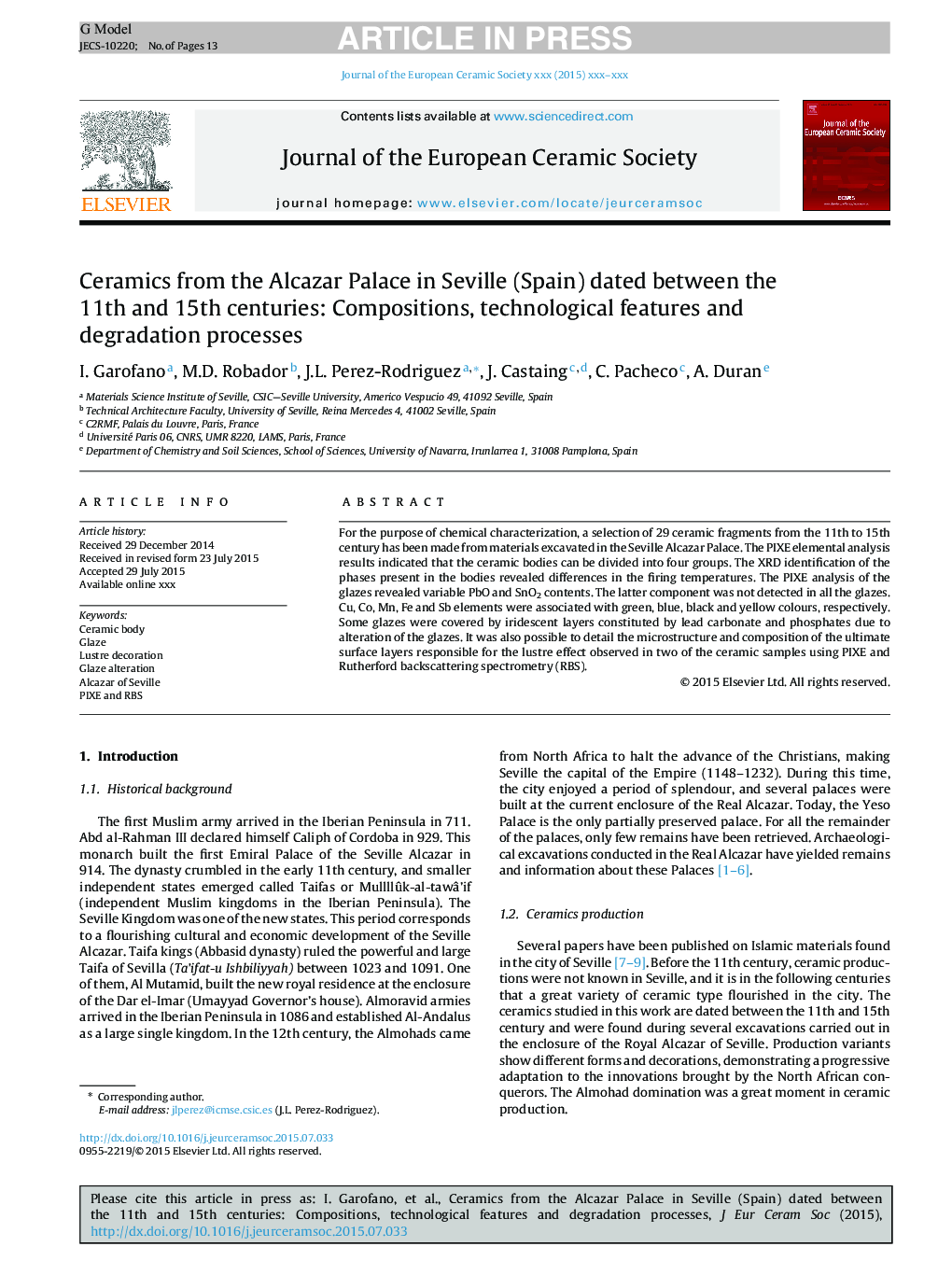| Article ID | Journal | Published Year | Pages | File Type |
|---|---|---|---|---|
| 10629360 | Journal of the European Ceramic Society | 2015 | 13 Pages |
Abstract
For the purpose of chemical characterization, a selection of 29 ceramic fragments from the 11th to 15th century has been made from materials excavated in the Seville Alcazar Palace. The PIXE elemental analysis results indicated that the ceramic bodies can be divided into four groups. The XRD identification of the phases present in the bodies revealed differences in the firing temperatures. The PIXE analysis of the glazes revealed variable PbO and SnO2 contents. The latter component was not detected in all the glazes. Cu, Co, Mn, Fe and Sb elements were associated with green, blue, black and yellow colours, respectively. Some glazes were covered by iridescent layers constituted by lead carbonate and phosphates due to alteration of the glazes. It was also possible to detail the microstructure and composition of the ultimate surface layers responsible for the lustre effect observed in two of the ceramic samples using PIXE and Rutherford backscattering spectrometry (RBS).
Keywords
Related Topics
Physical Sciences and Engineering
Materials Science
Ceramics and Composites
Authors
I. Garofano, M.D. Robador, J.L. Perez-Rodriguez, J. Castaing, C. Pacheco, A. Duran,
